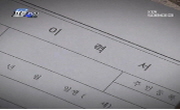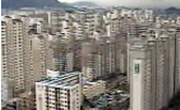본 연구는 조선산 공업자원 조사와 연관 제품에 관한 시험, 분석, 감정을 주무했던 조선총독부 중앙시험소를 대상으로 생산력확충계획이 실행 되고 산업물자가 제한되면서 발생한 입지 변...
http://chineseinput.net/에서 pinyin(병음)방식으로 중국어를 변환할 수 있습니다.
변환된 중국어를 복사하여 사용하시면 됩니다.
- 中文 을 입력하시려면 zhongwen을 입력하시고 space를누르시면됩니다.
- 北京 을 입력하시려면 beijing을 입력하시고 space를 누르시면 됩니다.

전시체제기(1937~1945) 조선총독부 중앙시험소의 운영과 대용품 연구 = During the Wartime(1937~1945), The Operation of The Central Research Laboratory of The Japanese Government-General of Korea and a Study on Substitutes
한글로보기부가정보
국문 초록 (Abstract)
본 연구는 조선산 공업자원 조사와 연관 제품에 관한 시험, 분석, 감정을 주무했던 조선총독부 중앙시험소를 대상으로 생산력확충계획이 실행 되고 산업물자가 제한되면서 발생한 입지 변화와 주력 연구 및 활동 등을 분석하여, 궁극적으로 전시체제 시기 시험소 연구원들의 자원과 대용품 에 관한 인식, 그리고 결과물을 확인하는 데 기본적인 목적을 둔다. 이 연구를 통하여, (1) 총독부는 시국대책위원회를 조성하여 나름의‘조선의 대륙전진병참기지’의 계획이 담긴 산업 방침을 준비했으나, 일본 정부에서 허가하지 않음에 따라 본토 요구인 제1차 생산력확충계획에 포 함되었음을 확인하였다. 다만, 이 계획은 조선에서 완제품을 생산하는 것 이 아닌, 본토 내에서 자급하지 못하는 원자재를 증산하거나 대체할 수 있는 조선산 원료를 발굴하여 생산을 늘리는 것이었다. 또, 「수출입품등 임시조치법」에 따라 금, 백금, 구리, 고무, 철강 등의 사용 제한 대상이 늘 어나자, 이를 대체할 수 있는 물자가 요구되었다. 이에 총독부는 책임지 고 조선산 자원을 발굴하고 대용품을 개발할 공업연구기관 중앙시험소 가 필요해졌다. (2) 시험소 사정은 조선에서 증산계획이 추진되면서 달라졌다. 기관의 부서는 1929년 이후 화학공업부, 염직부, 요업부 3부만이 존재하였는데, 여기에 1938년에 공예부, 1941년에 전기화학부가 증설되면서 5부 체제 로 확장되었다. 그뿐만이 아니라 정원도 1937년 기준 27명에서 1938년 에 32명(18.5% 증가), 1939년 34명(25.9%)으로 계속 늘어났다. 총독부에 서 ‘대용품 시대’를 맞이하여 요구에 부응하고자, 과학진용을 확충 강화 하기 위한 일환으로 시험소를 주목한 결과였다. (3) 사실 시험소 연구원들 역시 장기전에 대비하여 경제력을 키우고 군수 자재를 풍부하게 하는 것이 시급하다고 보았다. 다만, 본토만으로 공 업자원을 수급하기에는 어려웠고 마찬가지로 조선에서도 전쟁 물자를 생산하기 위해서는 외국에서 원료를 들어와야 하기에 ‘응급’ 또는 ‘특수’ 적인 대책이 필요하다고 생각하였다. 야마무라 소장, 안동혁 부장 등이 생각한 원료 결핍에 관한 특수 대책이라 함은 바로 대용품을 개발하고 제 산(製産)하는 것이었다. 총독부가 바란 물자 증산계획에 적극적으로 호응 하는 태세였음을 알 수 있다. (4) 1938년 시험소는 철강 대용원료, 인조섬유 연구 등을 시작으로 펄프, 비료, 고급윤활유, 합성재, 금속 대체용까지 시험개발 범위를 넓혀갔 다. 일본본토에서 해외 수입에 의존하고 있는 양모, 면화를 대용하기 위 해 인조섬유 개선 및 가공에 힘썼고, 또 본토에서 필요로 하는 공업원료 를 조선산으로 대체하기 위해 조선산 낙엽송을 이용하여 펄프와 타닌을, 연탄 제조에 필요한 핏치의 대체 원료 등을 개발하는 성과를 내었다. 게 다가 원료 중 금에 이어서 철제품까지 사용할 수 없게 되자 이를 사기 대 용품으로 제작할 수 있도록 하였다. 이렇듯, 시험소에서 개발된 대용품은 상품화와 실사용으로까지 이어졌다. 요컨대, 전시체제기 중앙시험소는 총독부와 일본본토의 증산계획으로인해 대용품 및 조선산 대체 원료에 관한 연구가 주요해지면서 주목받는 기관이 되었다. 시험소 연구원들도 원료가 풍부하지 않은 본토 사정에 맞추어 결핍을 보완할 ‘특수’ 대책으로 대용품 개발을 주장하였기에 총독부 의 정책과 상당히 일치하는 입장이었다. 본 공업연구기관은 인조섬유,...
다국어 초록 (Multilingual Abstract)
The basic purpose of this study is to confirm the awareness of resources and substitutes of the researchers of the wartime system test laboratory, and the results. (1) It was confirmed that the Japanese Government-General paid attention to the central...
The basic purpose of this study is to confirm the awareness of resources and substitutes of the researchers of the wartime system test laboratory, and the results. (1) It was confirmed that the Japanese Government-General paid attention to the central laboratory, a research institute that would discover shipbuilding resources and research and develop alternative products while implementing the first production capacity expansion plan and 「Act on Temporary Measures for Export and Import Goods, etc.」. (2) After 1929, there were only three departments of chemical industry, dyeing and ceramics departments, but here, the craft department in 1938 and the electrochemical department were expanded to about 5 departments in 1941. More than that, the garden also continued to meet, from 27 in 1937 to 32 in 1938 (an increase of 18.5%) and 34 in 1939 (25.9%). It was the result of the Japanese Government General's office trying to respond to the 'substitute era' as an opportunity, and paying attention to the laboratory defensively to expand the scientific ranks. (3) In fact, researchers belonging to the laboratory also thought it was urgent to increase economic power and enrich munitions in preparation for a long-term war. However, it was thought that 'special' measures were needed because it was difficult to supply and demand industrial resources only in Japan and Joseon. Director Yamamura and general manager An Dong-hyeok thought of a special countermeasure against the shortage of raw materials to eliminate production by developing substitute products. (4) In 1938, the laboratory expanded the scope of test development to pulp, fertilizer, high-grade lubricant, synthetic material, and metal substitute, starting with research on raw materials for steel substitutes and artificial fibers. In addition, when gold and then iron products became unusable among the raw materials, it was made possible to manufacture them as substitutes for porcelain. Substitutes developed in the laboratory did not remain in theory, but continued to commercialization and practical use, supporting the ‘industrialization of substitutes’. In short, the central research institute has become a research institute that is attracting attention as the use of restricted substances increases under the production capacity expansion plan and focuses on research on alternative substances. Researchers in the laboratory also showed an attitude quite in line with the Japanese government's policy, arguing for the development of alternative materials as a 'special' measure to supplement insufficient raw materials according to the situation in the mainland. The Japanese Government-General of Korea and the mainland achieved the desired outcome. As a result, the research institute in 1944 was called a barometer of the development of the shipbuilding industry.
동일학술지(권/호) 다른 논문
-
1910년대 조선총독부의 뽕나무 재배정책과 조선인의 대응
- 한국민족운동사학회
- 김란
- 2023
- KCI등재
-
- 한국민족운동사학회
- 한규무
- 2023
- KCI등재
-
중일전쟁 시기 ‘한국청년’의 항일 선전·예술 활동과 항일음악
- 한국민족운동사학회
- 이명숙
- 2023
- KCI등재
-
1960-70년대 한국가톨릭노동운동의 국제적 연대와 발전 : -한국가톨릭노동청년회(JOC)를 중심으로-
- 한국민족운동사학회
- 윤정란
- 2023
- KCI등재




 KISS
KISS






